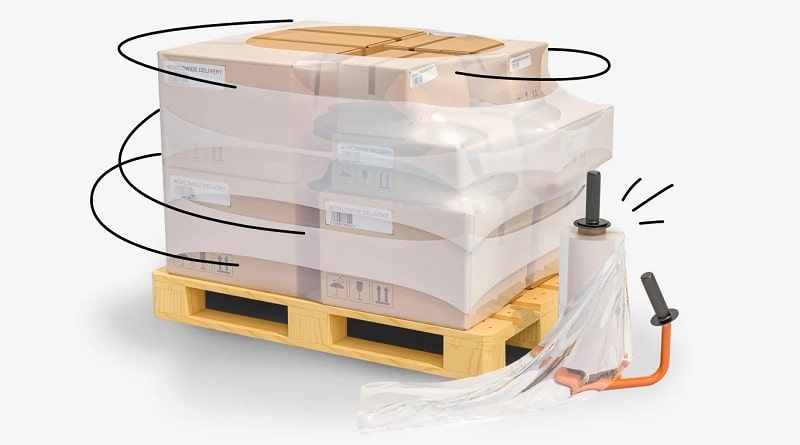Manual Pallet Wrapping VS Mechanical Pallet Wrapping
Pallets are a common loading vehicle. Good pallet packaging will make the storage and transportation of goods safer and operate more efficiently. You can pack the pallets by hand or use a pallet wrapping machine to pack the pallets. But finding the best pallet packaging tools is very important for packaging pallets. Quality tools and materials make your pallet packaging more efficient and safer.
If you only have a small amount of product to package, hand-packing pallets is a viable option. Companies that pack fewer than 50 or so pallets per day may choose to have employees pack pallets manually. Because from a cost perspective, the investment in pallet wrapping machines is not directly proportional to the throughput of goods. For businesses that need to pack more pallets, stretch wrapping machines are more efficient. Compared with manual packaging, it can greatly increase the daily processing volume of goods, reduce labor costs and bring more profits. The most common types of stretch wrappers are turntable pallet stretch wrappers, rotary arm stretch wrappers, and robotic stretch wrappers. Turntable pallet wrap machines and rotary arm stretch wrap machines are semi-automatic. Robotic stretch wrapping machines are fully automated.



How to Wrap A Pallet
Whether you wrap pallets by hand or use a machine, the basic steps are similar. These procedures will help you to make sure your pallets are wrapped with a good condition and promise the goods to get to their final destination safely.
- Prepare the load: Choosing the right pallet is the first step in pallet packaging. The pallet should be the right size for the load and in good condition. It needs to support the full weight of the load. If possible, loads should be stacked evenly from bottom to top. Items should be as close together as possible. This makes the pallet easier to wrap and helps prevent the load from shifting.
- Select your wrapping device: For manual packaging, tools like the stretch film dispenser can make pallet packaging easier and more ergonomic. If you need to wrap large quantities of goods frequently, a pallet wrapper may be a better choice. There are different machine types for you, you can choose the right one based on the degree of automation you require as well as your workshop’s layout.
- Attach stretch film: Pull some stretch wrap from the roll and twist it into a rope shape. You can weave it into the pallet slats or thread it through one corner and fold the rest over it.
- Wrap from bottom to top: The package starts at the bottom and goes up to the top. It’s better to wrap the base several times to ensure the load is securely attached to the bottom. The stretch film should achieve certain overlap ratio. If you are using a stretch wrapper, you can set this configuration on the machine.
- Maintain suitable tension: Tension controls how tightly the stretch wrap compresses the load. It ensures that the load is packed as tightly as possible. Fragile products require less tension to avoid crushing. For heavy and solid loads, higher tension is important to improve stability.
- Tie the end of stretch wrap: Once cut the stretch film from the spool, we need to tie off the stretch wrap. Although the stretch film will stick to itself, but for better safety, we can use a pallet strapping machine to reinforce the package.
Following best practices is important to prevent employee injuries and avoid damage to your products. BUHE has the stretch wrappers, stretch film dispensers and other tools you need to optimize warehouse logistics. For over 20 years we have been supplying our customers with top brand products.




